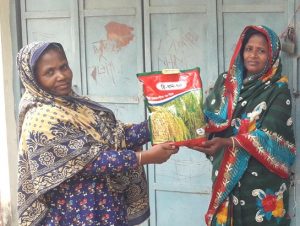By Jomo Kwame Sundaram, Wan Manan Muda and Tan Zhai Gen
KUALA LUMPUR, Malaysia, Dec 17 2019 (IPS) – Malnutrition remains a formidable challenge in most societies, with less than a tenth of countries in the world not experiencing at least one major malnutrition problem. In relatively more food secure countries, where almost everyone has enough to eat, and few live in fear of a sudden loss of access to food, micronutrient deficiencies and diet-related non-communicable diseases (NCDs) often still loom large.
One such country is Malaysia where rice is, by and large, available and affordable to almost everyone. However, what else Malaysians eat is quite problematic, causing to undernutrition in terms of micronutrients and other food-related health problems.
Malaysia has long been a melting pot of different cultures, resulting in various traditional foods and food customs coming together and changing with new technological, demographic, environmental, market and other behavioural influences.

Like most other societies, Malaysia has not been exempt from global trends, with greater food consumption away from home, and the growing popularity of ‘convenience foods’, deep-frying as well as sugared food and beverages.
Diets must improve
Undernutrition, or nutrient deficiencies, remains high, even though hunger, or dietary energy undernourishment, has greatly declined. However, stunting among children under 5 increased from 17.2% in 2006 to 20.7% in 2016, as the share of underweight children rose from 12.9% to 13.7%.
Public health efforts should ensure adequate micronutrient absorption in daily food consumption as deficiencies causing serious problems are largely ignored. For instance, median Malaysian calcium intake was less than half the recommended level in 2014.
Meanwhile, 4.9 million Malaysians were anaemic, around half women of reproductive age. Temporary supplementation for pregnant women is desperately needed, but anaemia in the general population deserves far more attention.
Overweight and obesity increase the risks of many NCDs such as diabetes, cardiovascular diseases and cancers. Alarmingly, NCDs are now the leading cause of premature death and disability. Malaysia is now among the ‘heaviest’ societies in Asia, with 17.7% of adults obese, and a further 30.0% overweight in 2015.
In less than two decades, the prevalence of diabetes increased from 6.9% in 1996 to 17.5% in 2015. NCDs reduce productivity and quality of life, and unnecessarily raise health costs, both private and public, with 10–19% of national healthcare spending in 2018 obesity-related.
While dietary energy consumption, mainly of carbohydrates, initially rises with income, further increases in food spending tend to increase dietary diversity.
But without nutrition awareness, changing food behaviours are typically influenced by new cultural norms, e.g., convenience considerations, peer influence, advertising and fads.
Overweight and obesity are also subject to genetics, behaviour, food consumption, physical activity, illness and globalization, e.g., more ‘food processing’ and ‘convenience foods’. Tackling these factors will improve health and use of scarce healthcare resources.

Improving policies
Like others, Malaysia’s nutrition programmes and policies have evolved. Post-independence nutrition programmes initially focused on improving living conditions among rural populations who constituted over two-thirds of its population in the late 1960s.
These efforts have included school feeding programmes, especially for poor children. But such programmes have been undermined by poor intersectoral, multi-stakeholder coordination, inadequate financing, limited human resource capacities and capabilities as well as poor monitoring and evaluation.
A well-organized, government-financed universal school lunch programme can not only improve nutrition for children, but also farmer incomes and food safety. These have successfully inculcated good habits in children, such as better nutrition, health awareness, physical development, learning, academic performance and cooperation.
In countries ranging from Brazil to China, procurement for such programmes has improved food production, increased incomes for farmers and others, parental participation in ensuring food safety and quality, instead of merely enriching transnational food giants.
Better food for all
Marketing of ‘junk’ and other unhealthy foods causing malnutrition needs to be restricted, especially to children, e.g., with stricter regulation of food and beverages sold in school canteens.
Food safety will also need to be improved, e.g., by reducing the overuse of antibiotics for animal, including fish breeding, and of pesticides, most of which also harm humans.
The recent California court decision deeming a popular herbicide carcinogenic raises questions about ‘no-till’ agriculture promotion, ostensibly to increase carbon sequestration in farm topsoil, to mitigate greenhouse gas contributions to global warming from agriculture.
‘All-of-government’ nutrition strategies are needed to effectively and comprehensively tackle national malnutrition challenges. Sustainable food systems are needed to promote healthy diets, while public nutrition education is badly needed for both children and adults.
Like other middle-income countries, Malaysia has considerably improved food availability, affordability and stability. What remains is to improve nutrition, health and wellbeing, especially by tackling micronutrient deficiencies and diet-related NCDs.
Addressing Malnutrition in Malaysia by the three authors, all associated with the Khazanah Research Institute, is available at: www.krinstitute.org




